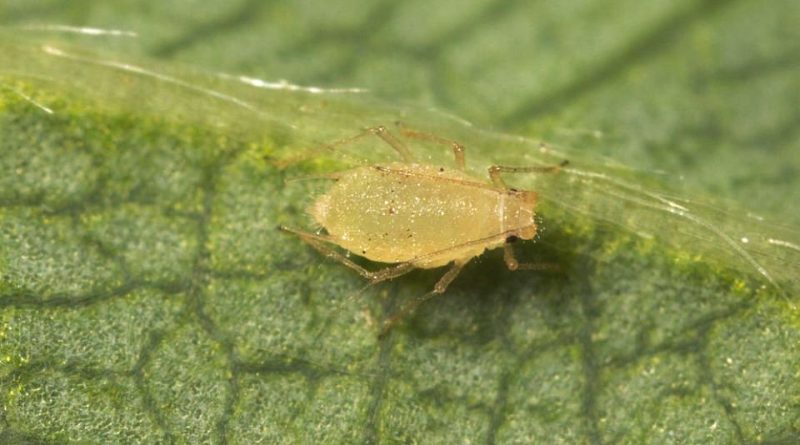Chaetosiphon fragaefolii
Chaetosiphon fragaefolii
The Green Strawberry Aphid (Chaetosiphon fragaefolii Cock.) Is a small gilded back-up belonging to the Aphididae family.
Systematics –
From a systematic point of view, it belongs to the Eukaryota Domain, Animalia Kingdom, Subgenus Eumetazoa, Superphylum Protostomia, Phylum Arthropoda, Subphylum Hexapoda, Class Insecta, Subclass Pterygota, Exopterygota Cohort, Subcoorte Neoptera, Superorder Paraneoptera, Rhynchotoidea Section, Rhynchota Order, Suborder Homoptera, Section Sternorrhyncha, Aphidoidea superfamily, Aphididae family, Aphidinae subfamily, Macrosiphinae tribe and then to the genus Chaetosiphon and to the C. fragaefolii species.
Geographical Distribution and Habitat –
The Chaetosiphon fragaefolii Monogoic species that develops on the Strawberry and in particular on the cultivated varieties. In Europe it is rarely found on wild strawberries (Fragaria vesca), while in America it is found on some wild species such as the Chilean strawberry (Fragaria chiloensis).
Morphology –
The Green Strawberry Aphid is recognized as the atheral form of the adults has a length of 1.3 to 1.5 mm, light green or yellow with short bristles along the whole body. The antennas are very long, sometimes more than the body. The legs have an almost transparent light green color. The winged forms have black thoracic head and lobes and the pale greenish-white abdomen with a brown-black dorsal part. The length of the winged body is 1.3-1.8 mm.
Attitude and biological cycle –
The Green Strawberry Aphid lives on strawberry plants, especially cultivated ones, and on spontaneous plants. The virginopare athere forms spend the winter on the Strawberry. From the spring, the individuals progressively increase and part of the winged forms develop from April to June, depending on the regions, to go to infest neighboring crops. Sexual forms are very rare and parthenogenetic reproduction occurs throughout the winter provided that the temperature is above 4.5 ° C.
In general these aphids overwinter, generally, at the adult stage, in various shelters, among host plants or on the margins of cultivated plants on wild plants.
Ecological Role –
Chaetosiphon fragaefolii, in its activity, often invades the foliage and the petioles of the strawberries also smearing them with honeydew and the rest of the exuviae. The aphid is common on strawberry in the open air and in greenhouses but rarely in wild strawberries; in addition to the damage it causes to the vegetation of the strawberry, due to the bites that weaken the plants and the honeydew, on which they also settle fumaggini, this Aphid is formidable as it transmits many diseases through viruses: Strawberry Yellowing (SYEV), curling (SCV), Marbling (SMV), a characteristic that it has in common with other aphids such as: C. fragaefolii, C. thomasi and C. thomasi jacobi.
Similar damage is also caused by two other related aphids which are: Sitobion fragariae (Walck.) And Macrosiphum euphorbiae (Thomas.).
Concerning the containment of this aphid it is necessary to immediately specify that its virulence is very linked to the fertilizing system that is carried out for cultivated strawberries that attracts this aphid (together with others) and to the excessive specialization of these plants that benefit the Green Strawberry aphid to the detriment of useful entomofauna and its predators and parasitoids.
The fight against this aphid, together with other Strawberry aphids, is carried out with different techniques, also depending on the cultivation environment: in the greenhouse and in a protected environment biological control can be implemented; in the field the chemical fight is carried out.
The biological fight in the greenhouse is carried out with flooding launches of the Chrysopid Neuropter: Chrysoperla carnea. The launch is performed, after evaluating the presence of phytophagous, introducing 18-20 larvae per m2 repeating it, possibly, in relation to the infestation. Currently, other insects are also being tested for biological control in the greenhouse, including: Aphidoletes aphidimyza which is a Cecidomide Diptera whose larvae are voracious predators of Aphids and Aphidius matricariae and Ephedrus persicae which are Hymenoptera Aphididae parasitoids.
As for the containment interventions in the open field, it is necessary to highlight, for the considerations made before about excessive specialization and fertilizing techniques often with excessive presence of nitrates, that biological control is often not feasible in a generalized way, if they do not correct themselves before such defects.If you are forced to the last beach of the struggle with chemical principles you must operate in a guided manner, in case of real necessity (threshold of 10-15% leaves infested in pre-flowering, and of 20-30% of leaves infested by flowering on).
Guido Bissanti
Sources
– Wikipedia, the free encyclopedia.- Russo G., 1976. Agrarian Entomology. Special Part. Liguori Editore, Naples.- Tremblay E., 1997. Applied entomology. Liguori Editore, Naples.

